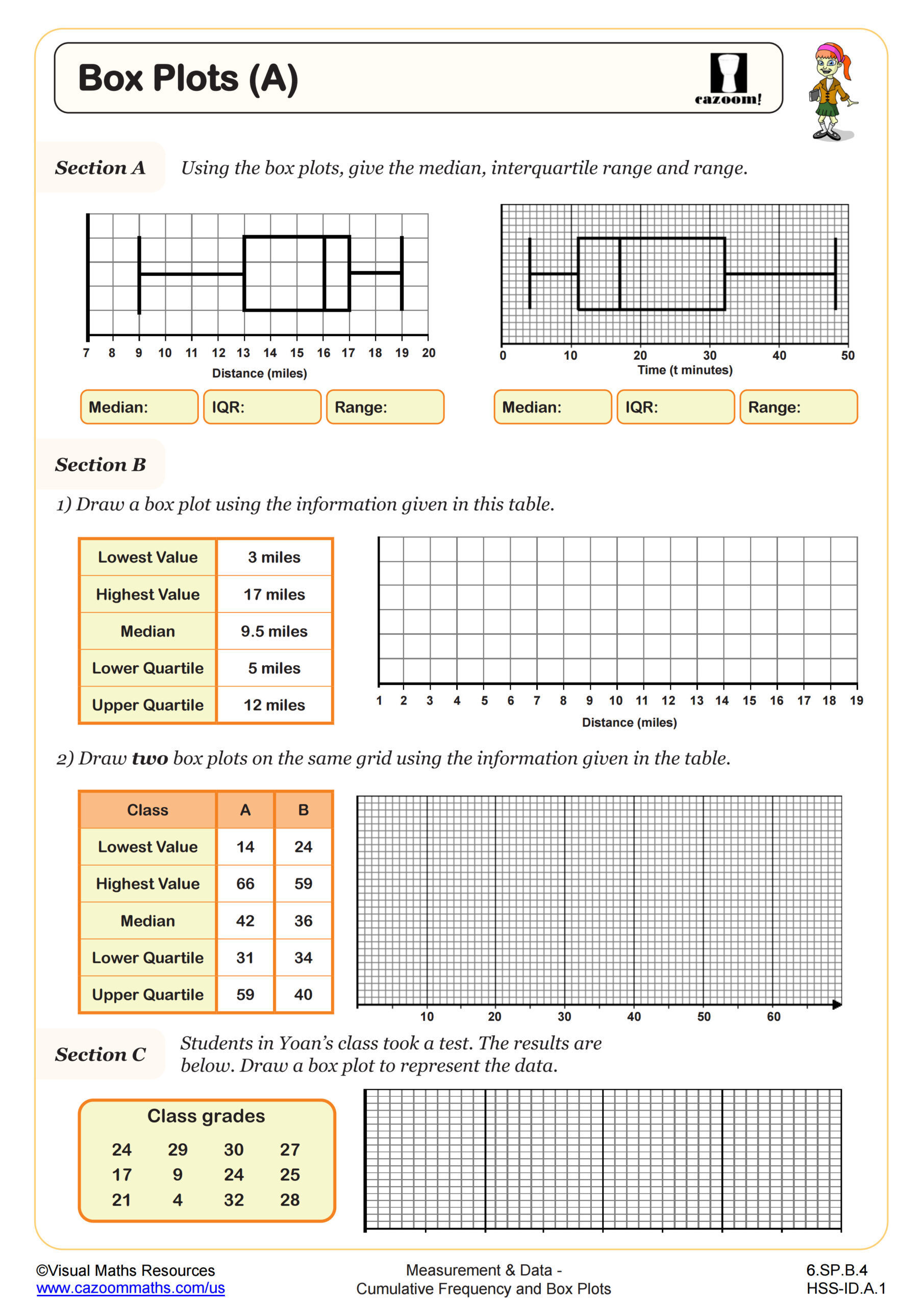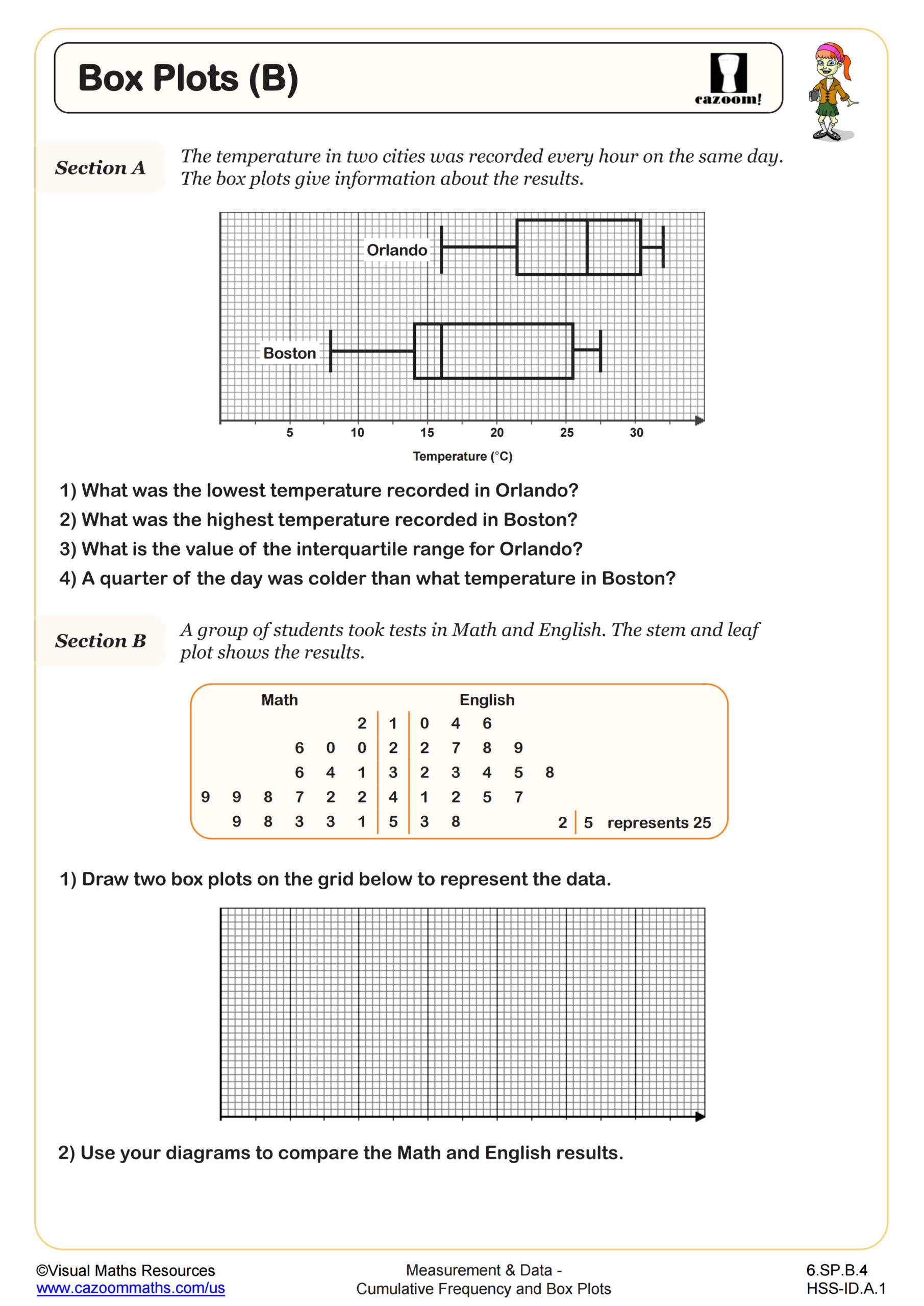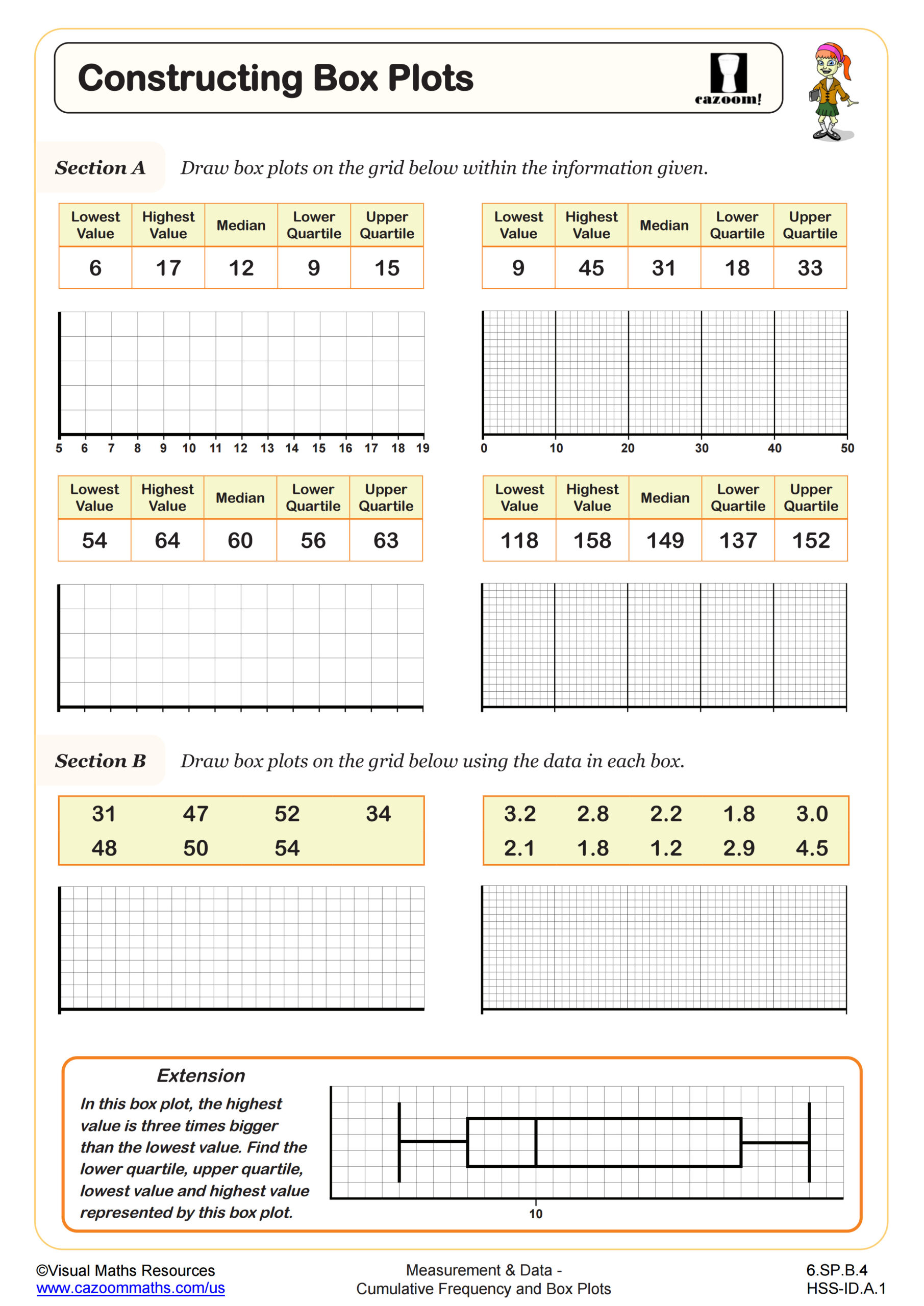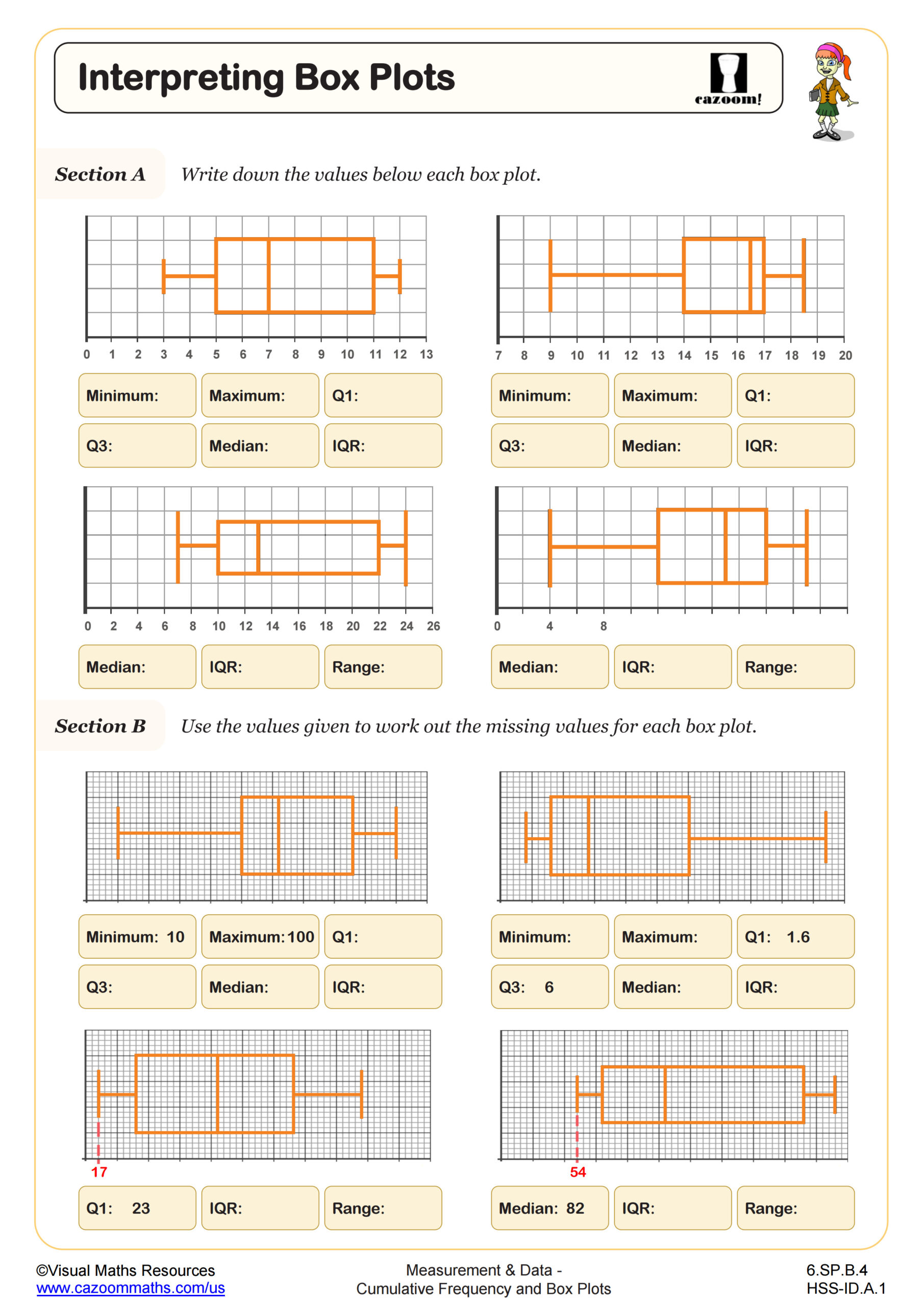Cumulative Frequency and Box Plots Worksheets
Printable PDF Cumulative Frequency and Box Plots Worksheets with Answers
Download our printable PDF Cumulative Frequency and Box Plots resources to give students the push they need when learning different concepts of statistics equations. Our math experts have specifically curated these resources in a way that your children can master the worksheet using simple statistics equations with clear and easy-to-understand instructions. Hence, our statistics resources are great for building a sense of basic statistical problems, algebraic equations and early problem-solving skills
What Are Cumulative Frequency and Box Plots?
The basic idea of Cumulative frequency shows how data builds up over time or across categories. It helps students understand totals and how values accumulate. Box plots, also called box-and-whisker diagrams, display the spread and center of data using five key values: minimum, lower quartile, median, upper quartile, and maximum. Together, these tools help students analyze and compare data sets effectively.
Why Are These Concepts Important in Statistics?
Cumulative frequency and box plots help students understand how data is distributed. These tools are essential for identifying outliers, comparing groups, and spotting trends. Students use them to calculate key statistics like medians and ranges. Mastering these skills builds a strong foundation for more advanced statistics topics in high school and college, while also improving their overall data literacy.
Real-Life Uses of Cumulative Frequency and Box Plots
These graphs are often used in fields like science, business, and education. For example, schools may use box plots to compare test scores across different classes. Businesses may use cumulative frequency to track sales performance. Learning how to read and create these visuals helps students interpret real-world data clearly and make informed decisions.



